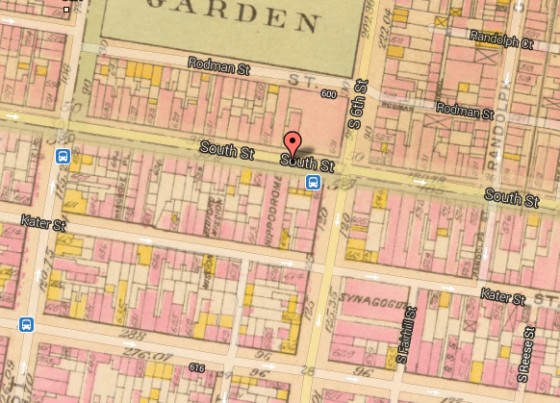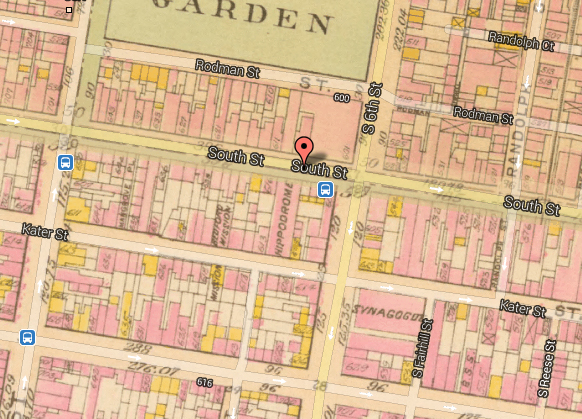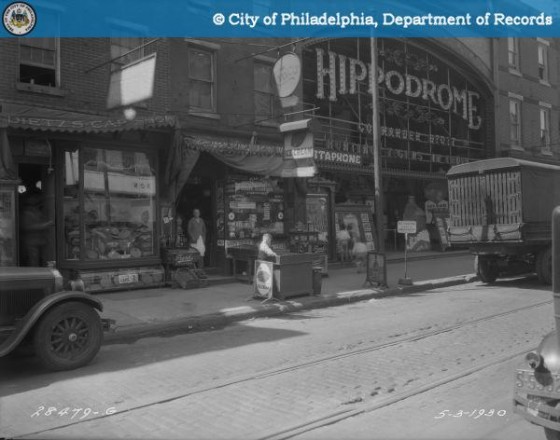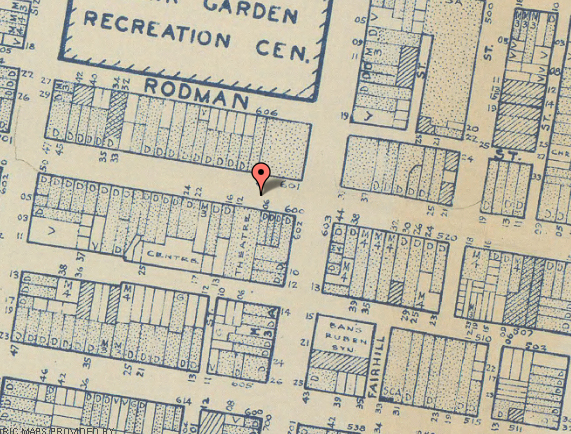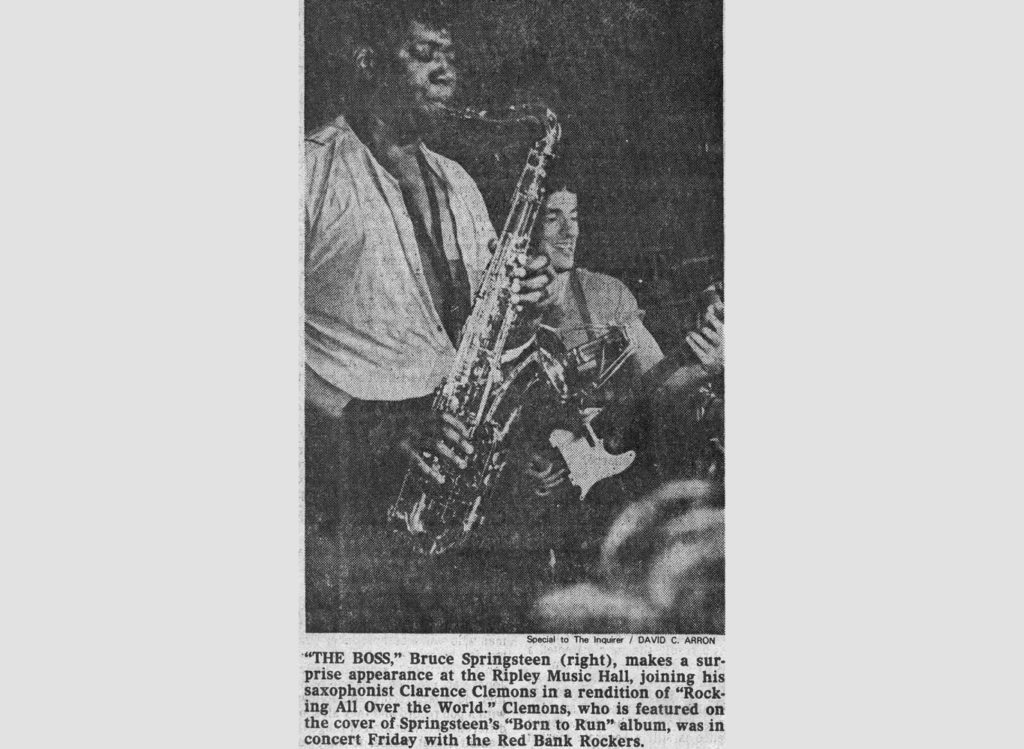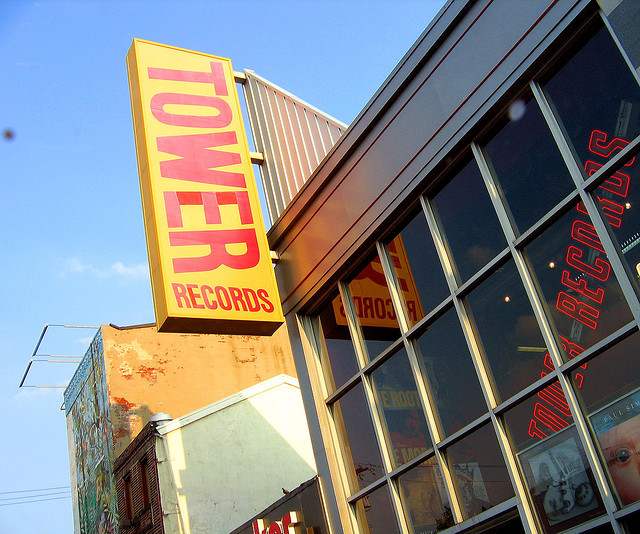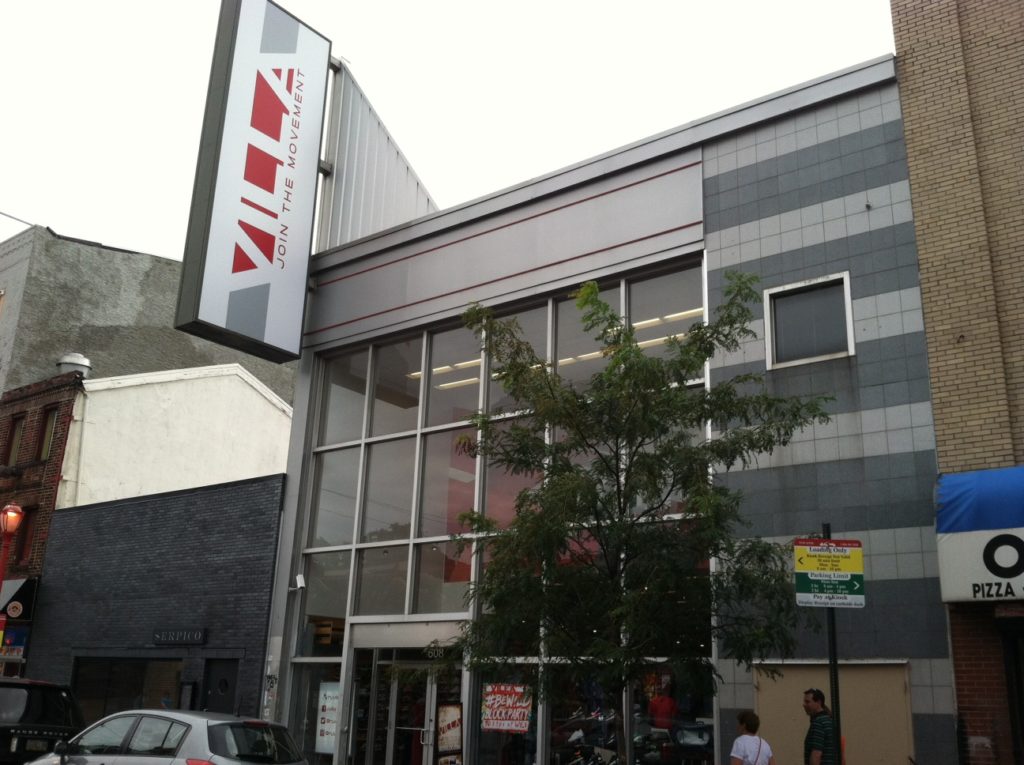Cinema Treasures tells us that Ripley Music Hall opened at 606 South St. in 1909 with a seating capacity of 500. However, the image taken from G.W. Bromley’s Philadelphia Atlas tells us that by 1910, the theatre was known by the much more hilarious handle, the Hippodrome.
In 1925, the Hippodrome underwent major renovations, which, according to one Cinema Treasures contributor, included the installation of a Wurlitzer theater organ. Here below, the Hippodrome is shown several years after the renovation, in an image taken from the Philadelphia Department of Records.
Apparently, during this period, the Hippodrome closed and made way for the reopening of Ripley’s. A 1942 Works Progress Administration’s Land Use Map vaguely identifies the location as a theatre.
Some reports indicate that it also spent some during the intervening period as a menswear shop like so many other buildings in the South Street district. By the 1980s, Ripley’s was back up and running. According to The Philly/Pop Index from 1981, Ripley’s Music Hall was, for some time, a “medium-sized disco” but had now been “reopened as a cabaret featuring national and local pop and variety acts.” Songkick shows that such acts included Stevie Ray Vaughan, The Ramones and an up-and-coming combo of young Irish lads called U2. In fact, the image here below, taken from Brucebase, shows that Bruce Springsteen even graced the small stage here for a surprise appearance during the club’s final year of existence.
Even the Boss couldn’t save the Ripley though. Evidence shows no performances after 1984. Thereafter, a 1987 article from the Philadelphia Inquirer gushes excitedly about the imminent arrival of Tower Records on a South Street largely dominated by independent shops and punk clothing stores. According to one commenter at the time of its anticipated opening, Tower Records, “has a distinctive style. Walk into a Tower Records, and you feel like you’re on MTV.”
Another South Street merchant observed “Boy, I’ve heard people say this is really going to be a big deal for South Street.”
And it was for 20 years.
Tower is shown here above, in a photo taken from somebody’s Flickr page, in its last throes of glory. When the CD business died, it took Tower Records with it in 2006. Thereafter, the building became a Walgreen’s. That too closed and just this year, Lutz’s Sneaker Villa opened for business. Villa, as its marquee calls it, has no apparent plans to host a Springsteen concert in the near future.
–David Tomar

